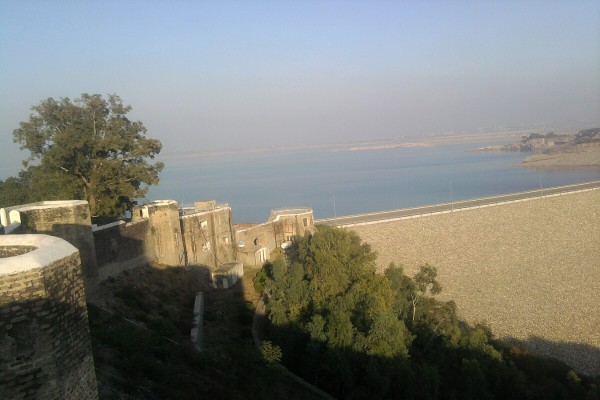
The Indus Waters Treaty, which India has put on hold following the massacre of tourists in Pahalgam by Pakistani terrorists, was “fundamentally flawed” and extremely unequal, says former Indian High Commissioner to Pakistan Satish Chandra.
“India has about 40 percent of the catchment area of the Indus basin, but under the treaty, we give away 80 percent of the water to Pakistan, keeping only 20 percent for ourselves. It defies logic,” Ambassador Chandra told StratNewsGlobal Editor-in-Chief Nitin Gokhale in an exclusive interview.
Signed in 1960 after nearly a decade of negotiations, the Indus Waters Treaty (IWT) is widely seen as one of the few enduring bilateral agreements between India and Pakistan.
Mediated by the World Bank, the treaty divided the six rivers of the Indus system: India received exclusive rights to the three eastern rivers — Ravi, Beas, and Sutlej — while Pakistan was granted the western rivers — Indus, Jhelum, and Chenab — with limited use rights for India on those.
But the treaty’s details, Chandra argues, reveal a lopsided arrangement that heavily favoured Pakistan. “At the time of partition, West Punjab — which became part of Pakistan — had around 140 canals irrigating 21 million acres. In comparison, East Punjab, now in India, had just 12 canals serving 5 million acres. A fair settlement would have taken these disparities into account.”
What makes the imbalance more shocking, he says, is that India not only agreed to this distribution but also financed the very infrastructure Pakistan used to exploit its generous share of the waters.
“India paid Pakistan $175 million over a 10-year period as part of the Indus Basin Development Fund. The total fund was about $900 million, of which the U.S. contributed nearly $450 million. India was the second-largest donor. With that money, Pakistan built two major dams — Mangla and Tarbela — and a slew of canals. All made possible, in part, by our money,” he revealed.
While India has, for decades, abided by the treaty even amid multiple wars and terror attacks, the latest massacre of Indian civilians in Pahalgam by terrorists from Pakistan has changed the calculus. For Chandra, India’s decision to pause implementation of the IWT is not only justified but long overdue.
“We’ve been extraordinarily restrained,” he said. “Despite the Kargil war, the 26/11 Mumbai attacks, and continuous cross-border terrorism, we kept honouring this treaty. Now, finally, we’re beginning to use our leverage.”
The decision to suspend treaty cooperation sends a strategic signal, he says: that India will no longer allow humanitarian or legal scruples to override national interest when dealing with a hostile neighbour. This is not just a water issue. It’s about sovereignty and national security, he argued.
Internationally, the move is likely to raise concerns, particularly given the World Bank’s role as guarantor and the treaty’s status as a model for transboundary water agreements. But India has taken pains to emphasise that its actions are in line with the treaty’s dispute resolution mechanisms and reflect growing frustration with Pakistan’s intransigence and double standards.
This is going to hurt them in the medium and long term,” Chandra felt. “It may not stop terrorism tomorrow, but it will send a message that we won’t continue to play fair when the other side doesn’t even play by the rules of humanity.”
India has already undertaken several hydroelectric projects on the western rivers — such as the Kishanganga and Ratle — within its legal rights under the treaty, but they have repeatedly faced objections and delays due to Pakistani complaints. Now, observers believe New Delhi may escalate by restricting water flows or accelerating projects previously slowed by diplomatic sensitivities.
In Chandra’s view, the treaty has for too long been shrouded in bureaucratic opacity and diplomatic niceties. This slice of post-independence history — where it gave away strategic resources and financed the other side’s gains — has been hidden from most Indians, he said. It’s time we talked about it.
Watch the full interview for more insights and little-known facts about the treaty, and why it should have been scrapped long ago.
In a career spanning three decades and counting, Ramananda (Ram to his friends) has been the foreign editor of The Telegraph, Outlook Magazine and the New Indian Express. He helped set up rediff.com’s editorial operations in San Jose and New York, helmed sify.com, and was the founder editor of India.com.
His work has featured in national and international publications like the Al Jazeera Centre for Studies, Global Times and Ashahi Shimbun. But his one constant over all these years, he says, has been the attempt to understand rising India’s place in the world.
He can rustle up a mean salad, his oil-less pepper chicken is to die for, and all it takes is some beer and rhythm and blues to rock his soul.
Talk to him about foreign and strategic affairs, media, South Asia, China, and of course India.




